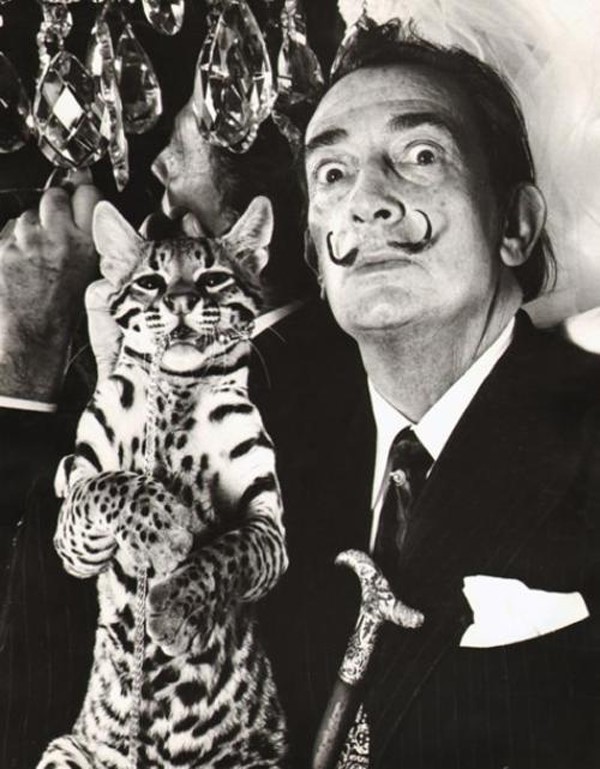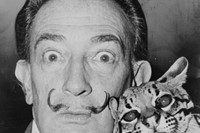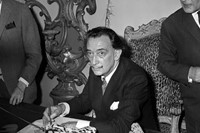No one could accuse Salvador Dalí of conforming to the norm, and his choice of pet was no exception
No one could accuse Salvador Dalí – master of Surrealism, who died twenty-four years ago today – of conforming to the norm. Tales of his various quirks abound, from his claim that his famed moustache was in fact an antennae that received alien signals, to his apparent consumption of vast amounts of camembert before bed, which he felt prompted wild and vivid dreams. He is even said to have perfumed himself with cow dung and fish glue to achieve an individual smell. Thus, it should come as little to surprise to learn that his most treasured pet was also of an unusual variety: a Colombian ocelot called Babou.
The ocelot (Leopardus pardalis), also known as the dwarf leopard or McKenney’s wildcat, is a species of wild cat found predominantly in South and Central America. It is similar in appearance to a domestic cat, although its fur resembles that of a clouded leopard or jaguar. From 1972 to 1997, this sleek, smooth coating led to the ocelot’s status as an endangered species after thousands were killed and their fur sold at great expense. Ocelot coat patterns can vary greatly, being anything from cream to grey to reddish-brown in colour and marked with black rosettes; while their ears are rounded, their tails long and their front paws large. The species is mainly nocturnal, with incredibly good vision, and is very territorial, fighting fiercely (sometimes to the death) in territorial disputes. In terms of ocelot facts, the animal-worshipping Moche people of ancient Peru used to revere the cats, often portraying them in their art, while other famous ocelot owners include the musician Gram Parsons who, as a teenager, kept one in the backyard of his family’s Florida home.
“Dalí acquired Babou in the 1960s, and for a time it was seen to accompany him, on a leash and stone studded collar, almost everywhere he went”
Dalí acquired his ocelot in the 1960s (allegedly from the Colombian Head of State), and for a time it was seen to accompany him, on a leash and stone studded collar, almost everywhere he went. One of the most popular accounts of Dalí and Babou is that of the painter bringing the wild cat into a Manhattan restaurant and tethering it to his table, causing great alarm to a fellow diner. To appease the woman’s fear, Dalí told her that Babou was nothing more than a normal cat which he had “painted over in an op art design.” Babou was privvy to the high life both at home and abroad – author Suzanne White describes seeing the cat stalking about “on a silken setee located in front of a carved marble fireplace” in Dalí’s living room, while famous images exist of the artist and his pet on a voyage aboard the luxury ocean liner the SS France. But despite Babou’s opulent existence, Dalí’s friend, the actor Carlos Lozano, was unsure of the beast’s ultimate happiness, removed as it was from its natural habitat; he wrote in his memoirs, “I only saw the ocelot smile once, the day it escaped and sent the guests at the Meurice scurrying like rats for cover.”



